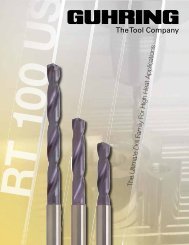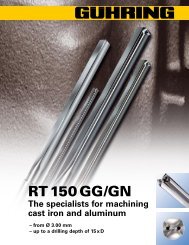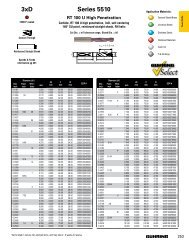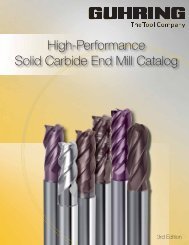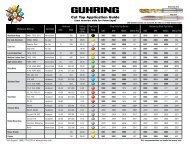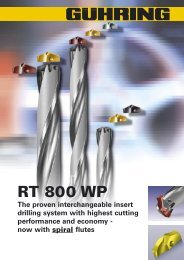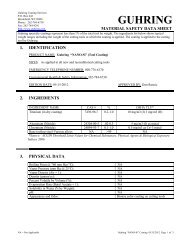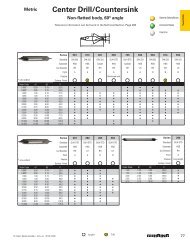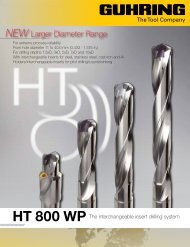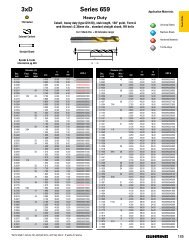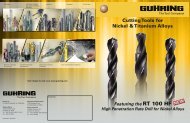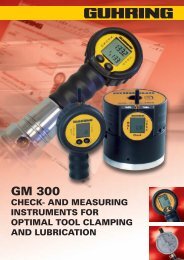PCD and CBN tools - Guhring
PCD and CBN tools - Guhring
PCD and CBN tools - Guhring
- No tags were found...
You also want an ePaper? Increase the reach of your titles
YUMPU automatically turns print PDFs into web optimized ePapers that Google loves.
… to synthetic <strong>PCD</strong> <strong>and</strong> <strong>CBN</strong><strong>PCD</strong> – a super-hard tool materialBecause diamonds have alwaysbeen very valuable, mankindhas attempted to artificially recreatediamonds – by means of magic <strong>and</strong>alchemy of course without success.However, natural science hasincreasingly unearthed the secretof the diamond <strong>and</strong> opened thedoor for a synthetic production.20 tons per annumThe first synthetic diamond wascreated at General Electric, USA in1955. More or less simultaneously,ASEA in Sweden developed asimilar process. With this specialprocess, at a temperature between1500° C <strong>and</strong> 1800° C <strong>and</strong> a pressureof between 53,000 <strong>and</strong> 100,000bar, synthetic diamonds up to 1mm diameter are produced fromgraphite, marketed under the name<strong>PCD</strong> (polycrystalline diamond).Currently, the annual productionof <strong>PCD</strong> is approximately 20 tons,primarily applied for cutting <strong>tools</strong>,grinding powder <strong>and</strong> for theproduction of cutting wheels.The advantage of <strong>PCD</strong> is primarilyits consistent high quality – afundamental pre-requisite for thefurther machining of <strong>tools</strong> with thesame characteristic.<strong>CBN</strong> – a tough alternativeCubic boron nitride (<strong>CBN</strong>) is ahigh-performance tool materialfrom a polycrystalline mass, thatsimilar to <strong>PCD</strong> is produced in a hightemperature-pressure process.<strong>CBN</strong>, its hardness only surpassedby a diamond, is suitable forthe machining of materials thatcannot be machined with <strong>PCD</strong> ormonocrystalline diamond. Themain application range is ferrousmaterials possessing a hardnessfrom approximately 45 HRC as wellas grey cast iron, Cr-chilled cast iron<strong>and</strong> wear alloys on a cobalt, nickelor iron basis.In contrast to <strong>PCD</strong> <strong>and</strong> diamond,<strong>CBN</strong> does not react with thecarbide constituents existingin these materials. Also of noconsequence are the occurringmachining temperatures, because<strong>CBN</strong> only reacts with oxygen froma temperature of approximately1200° C <strong>and</strong> subsequently possessesan unequalled thermal hardness.Only in so-called super-alloys inthe aircraft or reactor industry witha distinctive austenitic phase <strong>and</strong>simultaneously high toughnessdo <strong>CBN</strong> <strong>tools</strong> generally reachtheir application limits. Typicalrepresentatives are high Ni-alloyedmaterials such as Inconel 718or Nimonic. For these materialsmachining trials are necessary toclarify the application possibility.Synthetically produced<strong>PCD</strong> <strong>and</strong> <strong>CBN</strong> circular blanksLike a puzzleThe segment separation is performedwith optical programsBear strength<strong>PCD</strong> or <strong>CBN</strong> equipped face milling cutterGUHRING <strong>PCD</strong> <strong>and</strong> <strong>CBN</strong> <strong>tools</strong> 7



